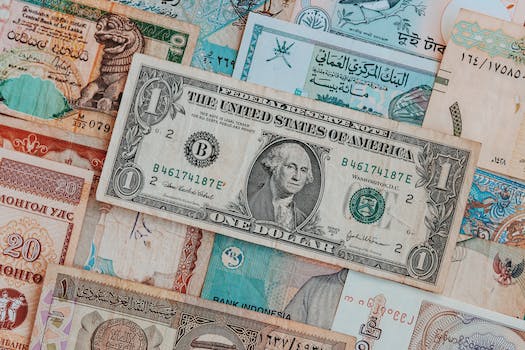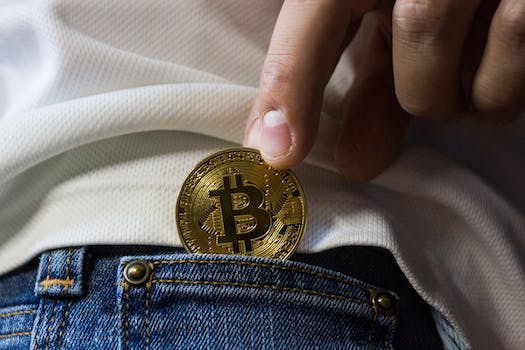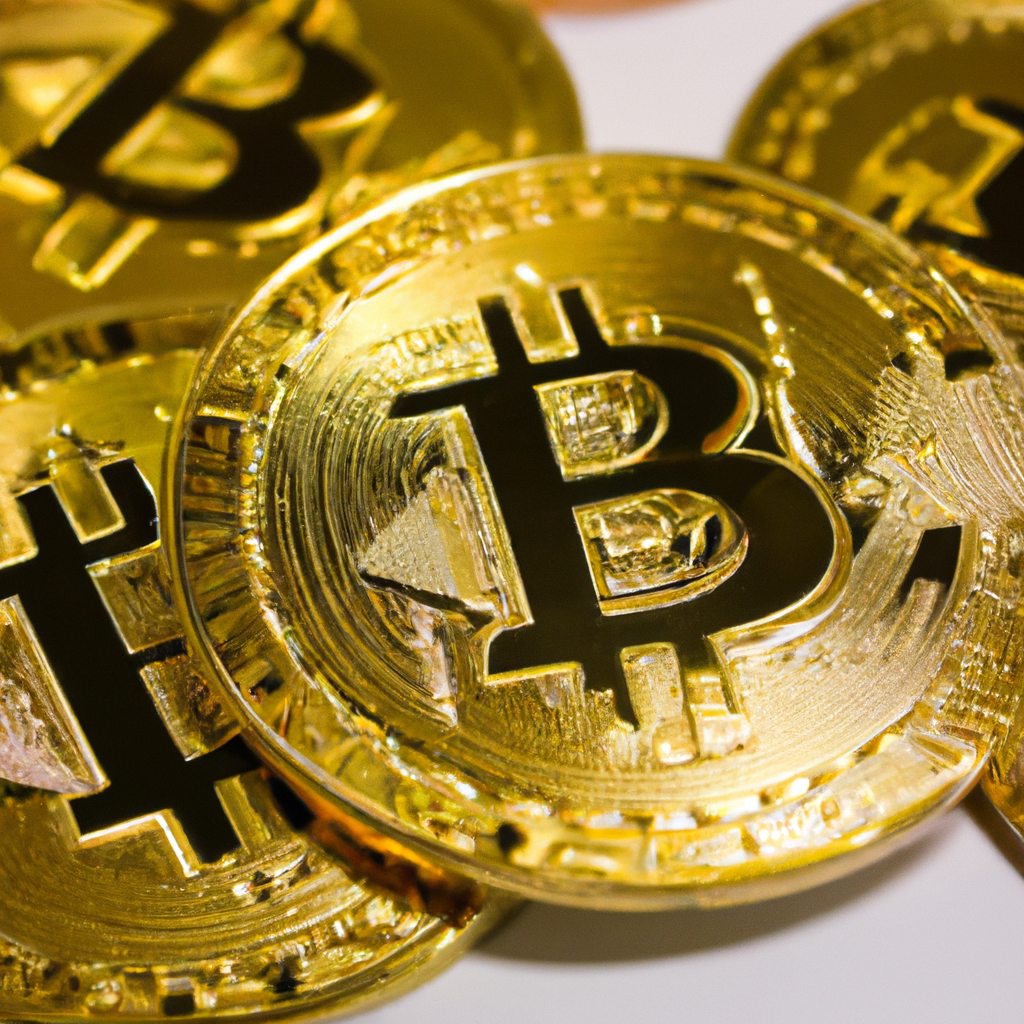This beginner’s tutorial will teach you all you need to know about purchasing Bitcoin. This guide will help you navigate the cryptocurrency world with ease and confidence, whether you are a veteran investor or just getting started.
- 1. Introduction
- 1.1. What is Bitcoin?
- 1.2. Why buy Bitcoin?
- 1.3. How to buy Bitcoin?
- 2. Step 1: Choose a Bitcoin Wallet
- 2.1. Types of Bitcoin wallets
- 2.2. Factors to consider when choosing a wallet
- 2.3. How to set up a Bitcoin wallet
- 2.4. Securing your Bitcoin wallet
- 2.5. Backing up your Bitcoin wallet
- 3. Step 2: Choose a Bitcoin Exchange
- 3.1. What is a Bitcoin exchange?
- 3.2. Types of Bitcoin exchanges
- 3.3. Factors to consider when choosing an exchange
- 3.4. How to sign up for a Bitcoin exchange
- 3.5. How to buy Bitcoin on an exchange
- 4. Step 3: Buy Bitcoin
- 4.1. How to place a buy order
- 4.2. How to determine the amount to buy
- 4.3. How to pay for Bitcoin
- 4.4. How to receive Bitcoin
- 4.5. How to transfer Bitcoin to your wallet
- 5. Conclusion
- 5.1. Benefits of buying Bitcoin
- 5.2. Risks of buying Bitcoin
- 5.3. Future of Bitcoin
1. Introduction
Bitcoin has been available for more than a decade, yet many people are still unclear how to purchase it. With cryptocurrency’s growing popularity, it’s critical to understand the fundamentals of buying and trading Bitcoin. This beginner’s guide will help you through the steps of obtaining Bitcoin, including creating a wallet and selecting a trustworthy exchange. By the end of this course, you’ll know how to buy Bitcoin and be well on your way to joining the exciting world of cryptocurrency.
1.1. What is Bitcoin?
Bitcoin is a decentralized digital currency that enables peer-to-peer transactions without the use of third-party middlemen such as banks or governments. It was founded in 2009 by an unknown person or group under the alias Satoshi Nakamoto. Bitcoin transactions are recorded on the blockchain, a public database that assures openness and security. Bitcoin’s supply is limited to 21 million units, with around 18 million currently in circulation. Bitcoin can be purchased and traded on numerous exchanges, as well as used to buy products and services from retailers who accept it as payment.
1.2. Why buy Bitcoin?
You could wish to acquire Bitcoin for a variety of reasons. To begin with, Bitcoin is a decentralized digital currency not controlled by any government or financial organization. This means it is more secure and private than traditional types of currency. Furthermore, Bitcoin has the potential to rise in value over time, making it an attractive investment. Finally, Bitcoin may be used to make online purchases of products and services, making it a convenient and efficient method of conducting transactions.
1.3. How to buy Bitcoin?
Before purchasing Bitcoin, you must first create a digital wallet in which to store your bitcoin. Wallets come in a variety of forms, including internet, desktop, mobile, and physical wallets. After you’ve created a wallet, you can buy Bitcoin via a cryptocurrency exchange. Choose a trustworthy exchange that is regulated and provides a secure trading environment. Coinbase, Binance, and Kraken are among popular exchanges. To purchase Bitcoin, you must first fill your exchange account using a bank transfer, credit/debit card, or other mode of payment. After funding your account, you can place a buy order for Bitcoin at the current market price. The Bitcoin is subsequently transferred to your digital wallet, where you can store and spend it as you see fit.
2. Step 1: Choose a Bitcoin Wallet
The first step in purchasing Bitcoin is to select a Bitcoin wallet. A Bitcoin wallet is a digital wallet that stores, sends, and receives Bitcoin. Desktop wallets, mobile wallets, web wallets, and hardware wallets are all different forms of Bitcoin wallets. Desktop wallets are placed on your computer, mobile wallets on your smartphone, online wallets may be accessed via a web browser, and hardware wallets are real devices that hold your Bitcoin offline. Each sort of wallet has pros and downsides, so do your homework and select the one that best meets your needs.
2.1. Types of Bitcoin wallets
There are various sorts of wallets to select from when it comes to storing your Bitcoin. The most prevalent types are as follows:
1. Hardware Wallets: These are physical devices that store your Bitcoin offline, making them more secure than other wallet kinds. Trezor and Ledger are two examples.
2. Software Wallets: These are digital wallets that you may use to keep your Bitcoin on your computer or mobile device. Electrum and Mycelium are two examples.
3. Paper Wallets: Paper wallets are printed pieces of paper that store your public and private keys. They are regarded as one of the most secure solutions because they are not linked to the internet.
4. Web-based Wallets: These are wallets that keep your Bitcoin on a third-party server. They are more prone to hacking and theft, despite their convenience.
Before purchasing a wallet, consider factors such as security, convenience, and ease of usage.
2.2. Factors to consider when choosing a wallet
Choosing the best Bitcoin wallet for your needs is critical to the security and ease of your digital assets. Here are some things to think about while choosing a wallet:
1. Security: Make certain that the wallet you use has strong security features, like as two-factor authentication and multi-signature support. Look for wallets that provide cold storage, which are offline wallets that are not linked to the internet and so provide an additional degree of security.
2. User-friendliness: An easy-to-use and browse wallet is vital, especially if you are new to the Bitcoin world. Look for wallets with a straightforward and user-friendly UI.
3. Compatibility: Make sure the wallet you select is compatible with the device you wish to use it on, such as your desktop, smartphone, or tablet.
4. Fees: Examine the wallet’s pricing structure to ensure it fits your budget and use needs. Some wallets assess a flat cost, while others assess a percentage of the transaction amount.
5. Reputation: Do your homework and select a renowned wallet provider with a proven track record of security and dependability.
2.3. How to set up a Bitcoin wallet
You’ll need a digital wallet to hold your Bitcoin before you can buy it. Wallets come in a variety of forms, including desktop, mobile, web, and hardware wallets. Each variety has advantages and cons, so it is critical to select the one that best meets your needs. Desktop wallets are software applications that you install on your computer, mobile wallets are apps that you download to your phone, web wallets are online services that you access through a web browser, and hardware wallets are physical devices that keep your private keys offline. After you’ve decided on a wallet, you can proceed to the next step of purchasing Bitcoin.
2.4. Securing your Bitcoin wallet
Keeping your wallet secure is one of the most critical components of having Bitcoin. This includes safeguarding your private keys and keeping your cash safe from possible hackers. Here are some precautions you may take to protect your Bitcoin wallet:
2.5. Backing up your Bitcoin wallet
One of the most critical components of having Bitcoin is backing up your wallet. This implies that even if your device or computer where your wallet is stored is destroyed, you will still have access to your Bitcoin. You will need to take a few simple steps to backup your wallet. The first step is to select a Bitcoin wallet that offers backup and restore capabilities. This is usually a software wallet that lets you export your private keys or seed phrase. After you’ve decided on a wallet, you can go to the next step of backing up your wallet.
3. Step 2: Choose a Bitcoin Exchange
After you’ve created a wallet, the following step is to select a Bitcoin exchange. This is the place to purchase and sell Bitcoin in exchange for fiat cash (such as USD or EUR) or other cryptocurrencies. It is critical to select a reputable exchange with stringent security measures in place to safeguard your assets. Coinbase, Binance, and Kraken are among popular exchanges. Each exchange has its own set of fees, security measures, and user interface, so do your homework before choosing one. Furthermore, due to regulatory limits, some exchanges may not be available in your nation or state, so be sure to check for availability. Once you’ve decided on an exchange, you’ll need to open an account, verify your identification, and link your bank account or credit card before you can start buying Bitcoin.
3.1. What is a Bitcoin exchange?
A Bitcoin exchange is a website where you can buy and sell Bitcoin with fiat money or other cryptocurrencies. It functions as a marketplace for buyers and sellers to trade Bitcoin at market values. Bitcoin exchanges often charge a service fee, which varies depending on the exchange. Some exchanges additionally include advanced trading alternatives such as margin trading, financing, and other advanced trading capabilities.
3.2. Types of Bitcoin exchanges
There are various sorts of Bitcoin exchanges, each with its own set of features and advantages. Centralized exchanges, decentralized exchanges, peer-to-peer exchanges, and brokerages are some of the most prevalent forms of Bitcoin exchanges.
The most frequent sort of Bitcoin exchange is centralized exchanges, which are run by a single firm. These exchanges are frequently the most user-friendly and provide a diverse choice of trading pairs and liquidity.
Decentralized exchanges, on the other hand, run on a decentralized network and enable users to trade directly with one another without the need for a central authority. These exchanges are typically more secure and provide greater anonymity, although they may have lesser liquidity and fewer trade pairs.
Peer-to-peer exchanges enable users to purchase and sell Bitcoin with one another without the involvement of a third-party intermediary. These exchanges are typically more private and may have lower fees, but they are less trustworthy than centralized exchanges.
Finally, brokerages enable customers to purchase Bitcoin via a third-party service that connects buyers and sellers. These services frequently charge larger costs, but they might be more convenient for people new to Bitcoin trading.
3.3. Factors to consider when choosing an exchange
There are various variables to consider while selecting a Bitcoin exchange. First, you should look into the exchange’s repute. Examine internet reviews to discover what other people are saying about the trade. Second, think about the security mechanisms that are in place. You want to ensure the security of your personal and financial information. Third, investigate the exchange’s fees. Some exchangers charge larger fees than others, so it’s critical to shop around. Fourth, think about the payment options that the exchange accepts. You should double-check that the exchange allows your desired payment method. Finally, think about the user interface and how easy it is to use. You should select an exchange that is simple to navigate and use.
3.4. How to sign up for a Bitcoin exchange
Signing up for a Bitcoin exchange is a simple process. Here are the steps you must take:
Step 1: Compare the features, costs, and security measures of the various Bitcoin exchanges available in your jurisdiction.
Step 2: Select a Bitcoin exchange that meets your requirements and open an account by giving personal information such as your name, email address, and phone number. Some transactions may necessitate the submission of extra verification documents, such as a government-issued ID or proof of address.
Step 3: Once your account has been verified, you can fund it with a bank transfer, a credit card, or any other payment method accepted by the exchange. Some exchanges may also allow you to buy Bitcoin with fiat currency.
Step 4: Once your money have been deposited, you can begin trading Bitcoin and other cryptocurrencies on the exchange. To avoid potential hazards, acquaint yourself with the trading tools and security features provided by the exchange.
3.5. How to buy Bitcoin on an exchange
Following the creation of a Bitcoin wallet, the next step is to select a Bitcoin exchange. There are various exchanges, each with its own set of features and fees. Coinbase, Binance, Kraken, and Gemini are among popular exchanges. It is critical to investigate and evaluate several exchanges in order to pick one that matches your requirements. Consider the exchange’s reputation, security measures, costs, and the availability of several cryptocurrencies. After selecting an exchange, you must register an account and authenticate your identity before you can begin buying and selling Bitcoin.
4. Step 3: Buy Bitcoin
It’s time to buy Bitcoin now that you’ve set up your Bitcoin wallet and selected a reliable trading site. The procedure is straightforward and simple. Here are the actions to take:
1. Sign in to your preferred exchange platform.
2. Select ‘Buy Bitcoin’ from the drop-down menu.
3. Enter the quantity of Bitcoin to buy or the amount of fiat currency to spend.
4. Select a payment method. Bank transfers, credit cards, and debit cards are accepted by the majority of exchangers.
5. Confirm the transaction and wait for the Bitcoin to appear in your wallet.
It is vital to understand that the Bitcoin price can be volatile and move quickly. It is best to monitor the market and only invest what you can afford to lose. Furthermore, it is advised to put your Bitcoin in a cold wallet, which is a physical device that keeps your currency offline and away from prospective hackers.
4.1. How to place a buy order
You can buy Bitcoin once you’ve set up your Bitcoin wallet and determined how much money you want to spend. There are various ways to purchase Bitcoin, including through a Bitcoin exchange, an individual seller, or a Bitcoin ATM. Whatever method you choose, do your research and select a reliable seller.
If you decide to buy Bitcoin from an exchange, the process is quite straightforward. Create an account with the exchange first, and then authenticate your identity. Then, fund your account with a bank transfer or credit/debit card. After you’ve deposited your funds, you can place a Bitcoin buy order. Enter the purchase amount and complete the transaction. Once the transaction is completed, your Bitcoin will be put into your wallet.
4.2. How to determine the amount to buy
Before purchasing Bitcoin, you should decide how much money you wish to invest. You might begin by establishing a budget for yourself and determining how much risk you are willing to take. It is best to start modest and progressively expand your investment as you gain more industry information and experience. You should also evaluate the current Bitcoin price and the fees connected with purchasing and selling. Keep in mind that Bitcoin is a risky asset with frequently fluctuating prices, so invest only what you can afford to lose.
4.3. How to pay for Bitcoin
The next step is to acquire Bitcoin after choosing a Bitcoin exchange and opening an account. To do so, you must select a payment method supported by the exchange. Bank transfers, credit/debit cards, and PayPal are all frequent payment methods. In terms of fees and processing times, each payment method offers pros and cons. After you’ve decided on a payment option, enter the quantity of Bitcoin you want to buy and complete the transaction. The Bitcoin will then be put into your exchange account, where it will be available for use or storage in a secure wallet.
4.4. How to receive Bitcoin
When you purchase Bitcoin, it is held in a wallet. This wallet functions similarly to a digital bank account, allowing you to save, send, and receive Bitcoin. You must supply the sender with your wallet address in order to receive Bitcoin. This is a one-of-a-kind string of numbers and letters that identifies your wallet. Simply open your Bitcoin wallet and go to the ‘Receive’ section to find your wallet address. A QR code and a string of characters that make up your wallet address can be found here. To receive Bitcoin, you can share one of these with the sender.
4.5. How to transfer Bitcoin to your wallet
After you’ve purchased Bitcoin, you’ll need to transfer it to your wallet. Here are the actions to take:
1. Locate and copy your Bitcoin wallet address.
2. Return to the exchange or wallet where you bought your Bitcoin.
3. Select ‘Send’ or ‘Withdraw’ and input the amount of Bitcoin to be transferred.
4. Fill in the ‘Recipient Address’ column with your wallet address.
5. Confirm that you input the right wallet address.
6. To finalize the transfer, click ‘Send’ or ‘Withdraw’.
It’s crucial to know that Bitcoin transactions sometimes take a while to process, so be patient and wait for the transaction to finish before checking your wallet balance.
5. Conclusion
To summarize, while purchasing Bitcoin may appear intimidating at first, it is actually a simple process once you understand the fundamentals. You may comfortably enter the world of cryptocurrencies and begin investing in Bitcoin by following the steps given in this beginner’s guide. Always conduct thorough research, keep your private keys secure, and never invest more than you can afford to lose. With patience and diligence, you may be able to reap the benefits of this dynamic and fast changing sector.
5.1. Benefits of buying Bitcoin
Among the many advantages of purchasing Bitcoin are:
1. Decentralized money: Because Bitcoin is not controlled by any government or financial organization, it is classified as a decentralized currency that is not affected by inflation or other economic variables.
2. Anonymity: Because Bitcoin transactions are anonymous, your personal information is not linked to your transactions.
3. Security: Because of its advanced encryption mechanisms and decentralized structure, Bitcoin is an extremely secure money.
4. Global currency: Bitcoin can be used to conduct global transactions without the use of currency exchange or other intermediaries.
5. Investment potential: Bitcoin’s value has increased significantly over the years, making it a potentially profitable investment prospect.
5.2. Risks of buying Bitcoin
Purchasing Bitcoin, like any other investment, carries its own set of hazards. The cryptocurrency market is extremely volatile, and Bitcoin’s value can swing dramatically. This means that the price you pay for Bitcoin today may differ significantly from the price you can sell it for tomorrow. Furthermore, because Bitcoin is not backed by any government or financial institution, there is no safety net in the event that the market crashes or your coins are stolen. In the past, hackers have targeted cryptocurrency exchanges, causing the loss of millions of dollars in Bitcoin. Finally, Bitcoin is still a new technology, and there is always the possibility that it will become obsolete or be replaced by a newer, more advanced cryptocurrency in the future.
5.3. Future of Bitcoin
Bitcoin’s future is uncertain, but many experts anticipate it will continue to gain popularity and value. Some think that Bitcoin will become a popular currency and will eventually replace traditional modes of payment. Others think that it will remain a niche investment that will never see mass adoption. Whatever the future holds for Bitcoin, it is apparent that it has already had a huge impact on the financial world and will continue to be a topic of interest for investors and technology enthusiasts alike.
Conclusion
To summarize, purchasing Bitcoin may appear intimidating to novices, but with the proper understanding and care, it can be a safe and secure investment. Remember to do your homework and select a trustworthy exchange, to protect your digital wallet, and to never invest more than you can afford to lose. Congratulations on your investment!





